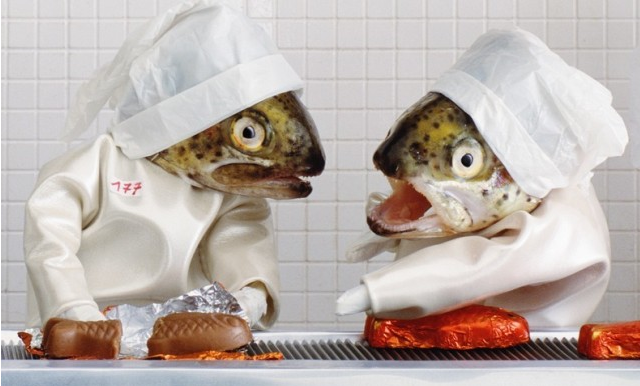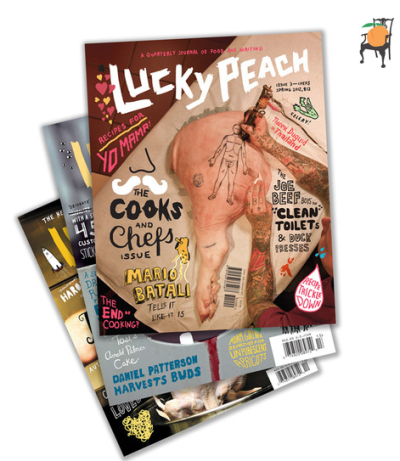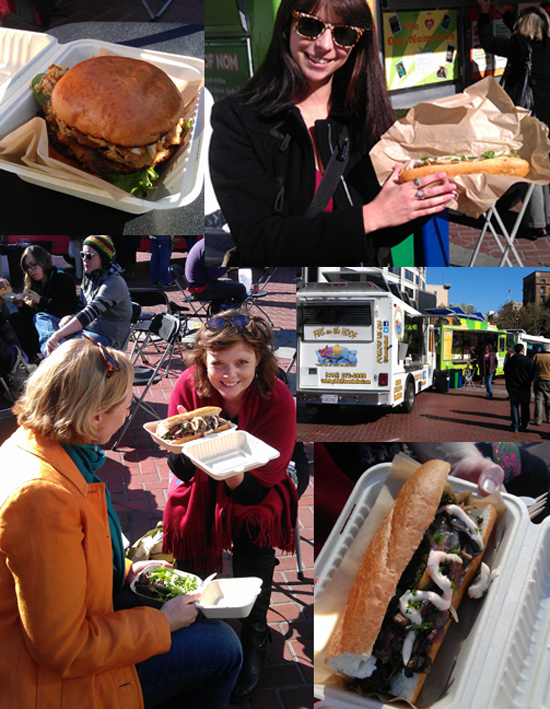On November 23, Polly Legendre represented Polish Partnerships at the Creative City and Global Economy Conference in Tokyo as part of a panel on Innovative Society Empowered by Art, Design and Imagination.
Below is the text of her speech.
Gastronomy is the study of food and culture. Economy is what keeps us all is business – we need to tap into both.
My name is Polly Legendre and I am first and foremost, a chef de cuisine. I decided to become a chef at the age of 12, and moved to France on the day of my 17th birthday.
I became the first American graduate of the Ecole Superior de Cuisine Francaise and continued working in top Parisian restaurants for nine years. I have owned two catering companies and was the culinary director and director of vetting for CleanFish, a sustainable seafood company in California.
Now, I am the co-founder of Polish. Polish helps participants across all food systems find their story and polish it up for the marketplace.
I have always been intrigued by how culinary arts, innovations, and technology converge to what I call the New Gastroconomy.
Gathering around the table to share ideas has been an essential, organizing principle for creative exchange from the ancient world to the modern coffeehouse. But for those with a culinary vision, finding the economic means to express their art can prove to be difficult.
This is what we do at Polish: find creative use of social media and online word of mouth marketing that make it possible for the chef to find an audience and for the audience to find the chef. This person-to-person connection is redefining what an authentic food experience is — largely supported by smartly-leveraged, fast-paced and accessible story telling.
Now, inside the food movement, successful leveraging of technology — both its innovation and application — is allowing the creation of a new Gastroconomy, breaking down barriers to bring the culture of food to the people.
Access to new systems are proving to be far less capital intensive and more nimble, therefore making it possible for the freshest ideas to emerge — and for people to build community around them.
The movement is cooperative, participatory, fast-paced and centered around connection — connecting people to each other and connecting people to their food. In this day in age, social media has indeed created a sort of virtual eco-system.
Staring out with artisan producers:
In the past, small producers needed to find their audience. The smaller you are, and the more specialized, the harder it was.
Now, artisans who are too small or too experimental for the established distribution system can sell their wares online and connect face to face with customers at temporary food marketplaces, such as pop-ups that are organized online and “advertised” through social media.
For example, Christopher Lee, former chef of Eccolo in Berkeley, CA, now runs a pop-up throughout the year where different artisans are featured and actually “pre-sell” their goods. They use the web to take orders and receive payment up front. This reduces the risk of coming to the city and not selling anything.
When people can’t meet, QR codes attached to the products can take shoppers to a video or message about what they’re buying and who made it. Leveraging this technology is allowing artisan stories to have a lasting effect and creating long term loyal customers who feel connected- both of which are essential steps to effective brand building.
Another example of the QR application is to provide an accountability tool or auditing system. Fishermen off the New England Coast are recording their catch statistics for each trip. This information, in the form of a code, follows the fish all the way to the chefs. In some cases chefs are then passing it on to their client, so the diners themselves can trace the fish all the way back to the boat. So, in this instance, you can see the application of the QR code has created a traceability system for foods instead of just a marketing tool.
As we all know, customers and diners participate more in both time and money when they feel they are part of the process or have knowledge others do not. By posting videos, chefs give customers a privileged view. Much like chef's tables were leveraged in the past, this viewpoint goes a long way to cementing that bond between your operation and your customer.
Another example, the New York restaurant Bell, Book & Candle, uses a system of rooftop hydroponic gardening that you would not “see” as a passive diner, but instead you can watch videos and it comes to life. We watch chefs shop at the markets and follow them.
Customers feel that they know something more and will more likely share it. Farmers can show how soil is prepared and the harvest; chefs can share the behind the scenes frenzy without having someone underfoot. It’s a type of food systems voyeurism, and customers like the opportunity to see into a world they don’t have physical access to.
This new paradigm and nimble approach is also supporting the start-up side of business. Now a young chef who doesn’t have access to the necessary funding to open has options. He or she can start a pop-up restaurant concept, rent or borrow space and bring a spontaneous, performance aspect to the restaurant form.
In some cities, culinary projects have cropped up where, thanks to virtual story telling, young chefs can “guest chef” for a night or two, thus trying their menus, ideas and testing the ground. Leveraging this online following and access to community members who are willing to dine on the cutting edge gives young chefs, culinary artists, immediate feedback and a potential client base. Amateurs who think they might want to try their hand at being a chef or restaurant owner are using this same access.
Or they can take their craft literally on the road with a food truck, or in this case a taco bike.
Food trucks are hot across the US right now and frankly this would not be the case if there weren’t a fast paced network like twitter. Twitter has emerged as a one-stop shop for the “I want what I want when I want it” crowd.
Cities are getting into the scene, organizing food truck events like the Off the Grid event in San Francisco.
Virtual maps and accessible databases via smart phones are allowing the public to follow certain chefs and operations.
It can also be a way of getting an active message out about certain issues. For example, the Slapfish truck in Southern California is using the truck to not only serve up incredible seafood dishes, but this classically trained chef is also a huge sustainable seafood advocate and uses the truck and menu to profile seafood choices, showing diners and peers alike that delicious and sustainable can go hand in hand.
Brick and mortar restaurants are also getting into this type of activity. They have seen the value of tapping into a generally younger crowd, and are looking at this technology leverage in order to keep their image “cool” as well as for some very practical economic purposes. Having a mobile food unit is allowing test markets to determine how the establishment will be received in new neighborhoods, not to mention, there have been instances when the building itself was to be shut down for renovations and the cash flow was still on thanks to the mobile approach.
There is also an environmental aspect to this, as you can now bring a restaurant of sorts to people instead of people coming to one restaurant — one to many instead of many to one.
A recent example of this is Oregon based Burgerville. They recently developed the Nomad supplementing their 39-store chain. This has helped them enter into twitter and social networking as they never had before. It’s a showcase on wheels.
Twitter is also being used as a live auction site. Fish wholesalers are letting chefs know that only a limited number of pounds of a fresh or exotic fish remain in his cooler. The first one to tweet their order gets it. Restaurants are interacting with guests- real time for reservations, complaints or issues that may crop up and use twitter to book events and last minute replacements for cancelled reservations.
Menu creations and seasonal variations are being tweeted to client followers as well as reviewers. In fact, this type of technology moves so fast, it does seem to fit with the hyper kinetic activity most chefs engage in.
Interactive projects like crowd-sourced cookbooks and underground supper clubs are attracting local participants, supper clubs are now tapping into online communities to invite tourists to attend for a real and super-local dining experience.
This in-bound tourism and cross channel marketing is bringing together art, food and culture. As co-founder of Polish, and as a chef, I am dedicated to new systems of urban food production that are bringing the farm to the people, along with a new sense of ownership that is transforming consumers into co producers. Having a good product is not enough anymore. To participate in the Gastroconomy you need solid brand building, deliciously bringing together art, culture and technology innovations for vibrant commerce and resilient communities.










